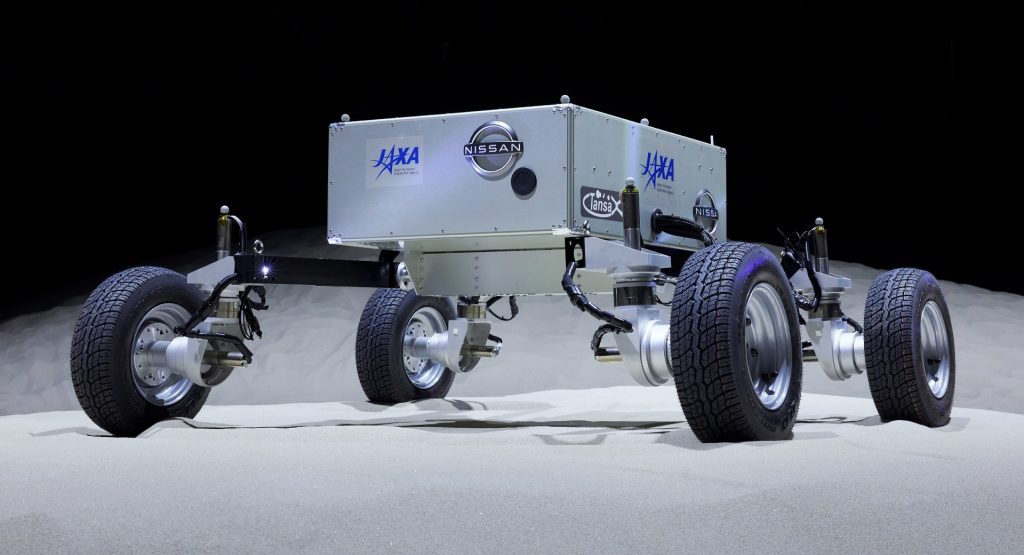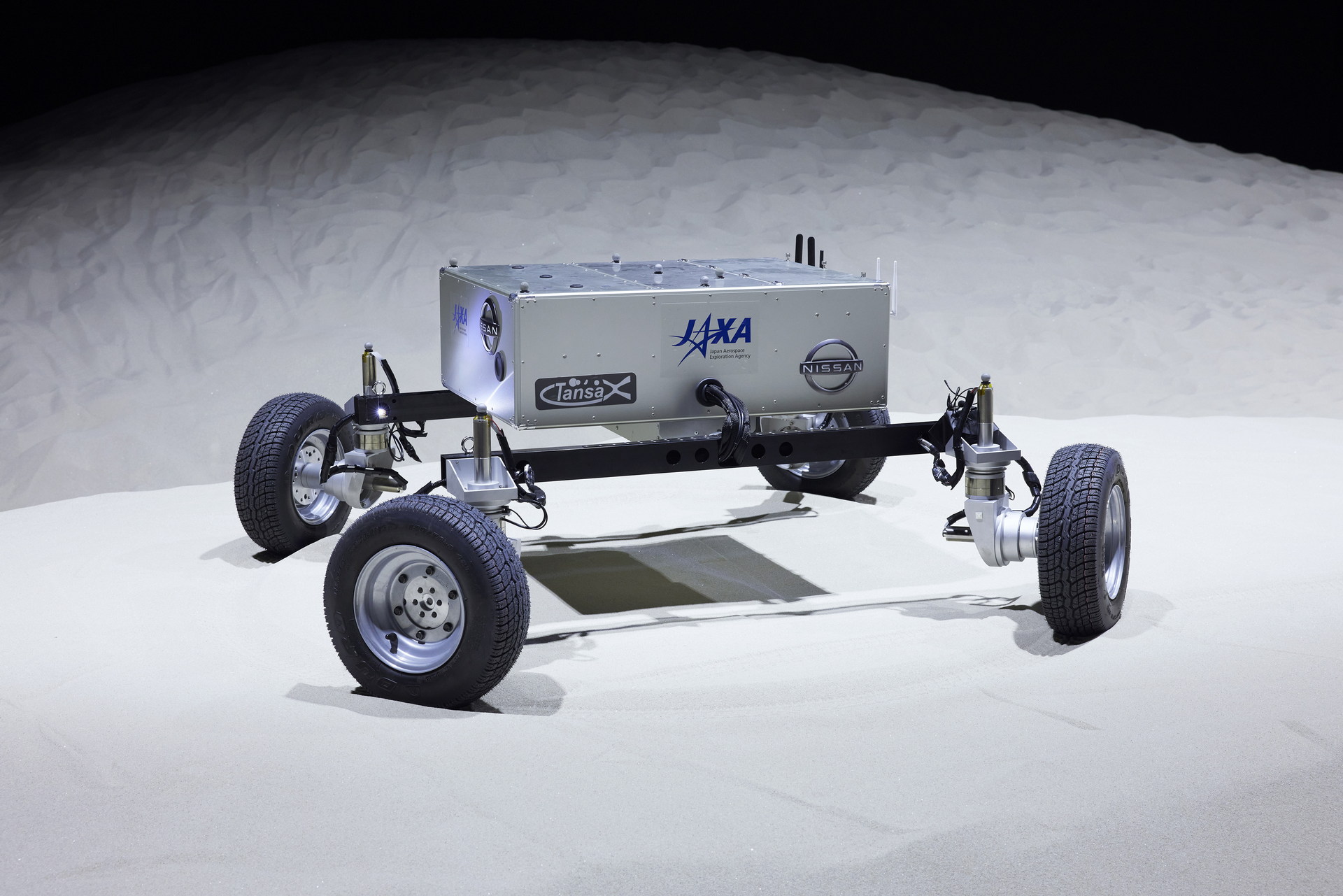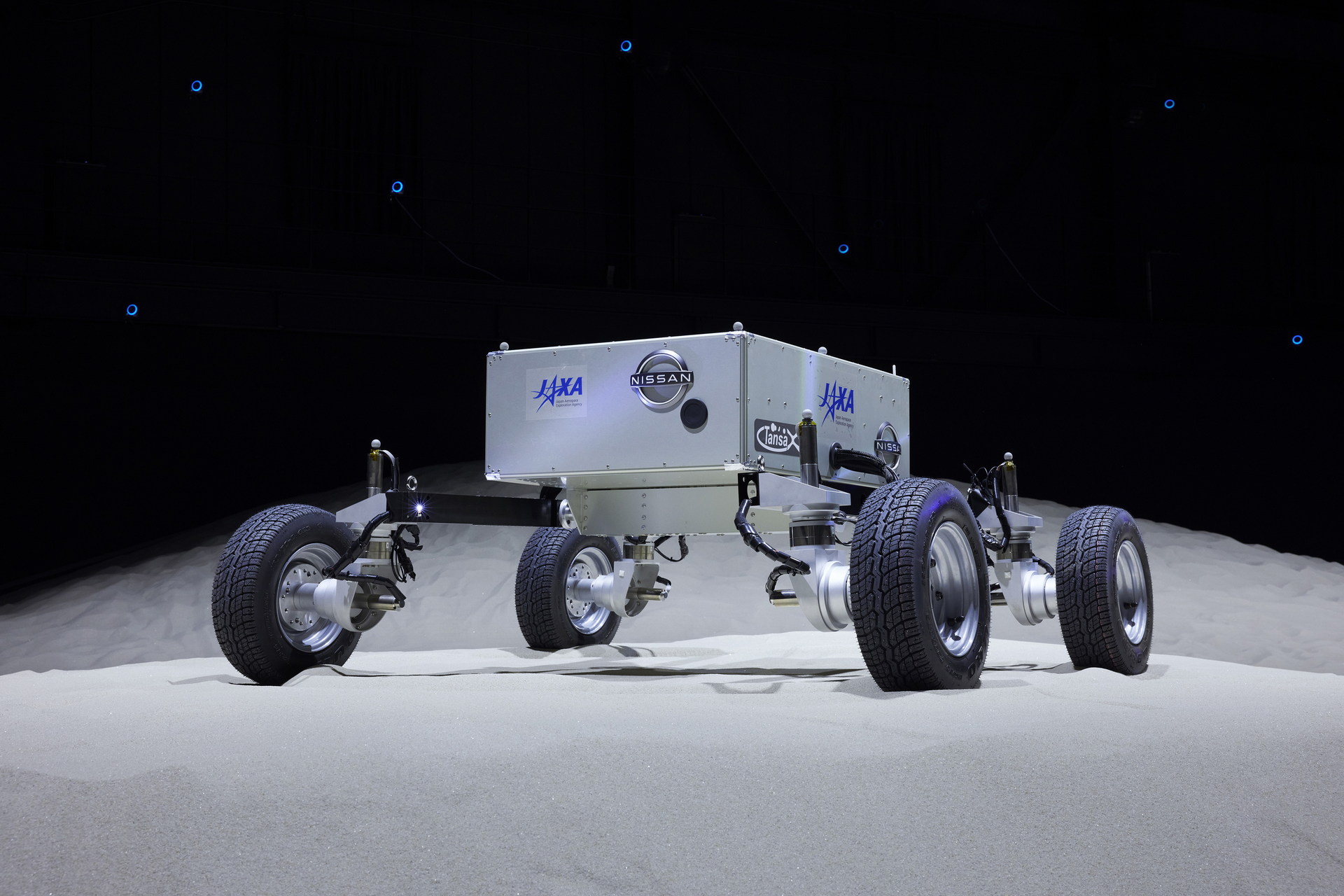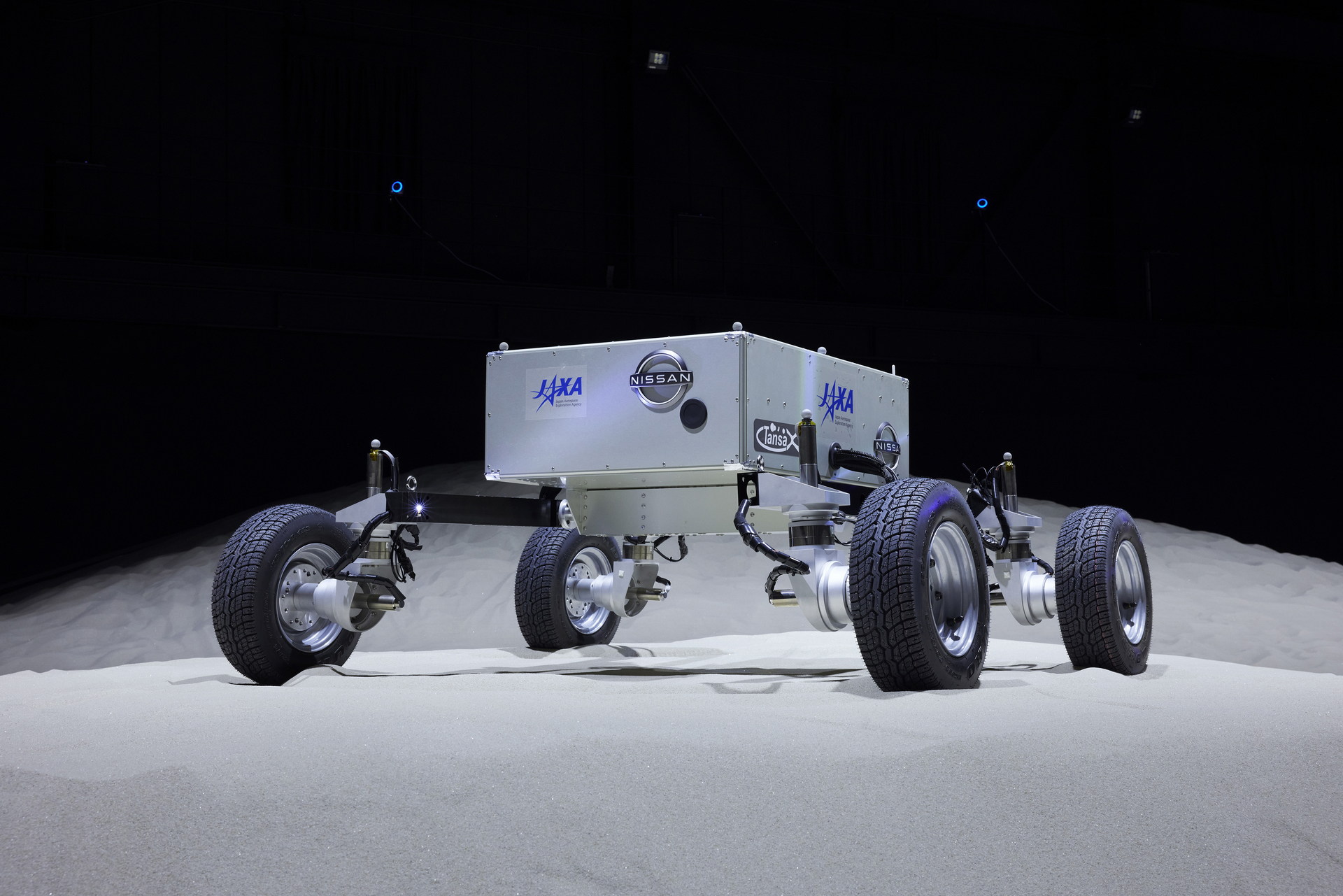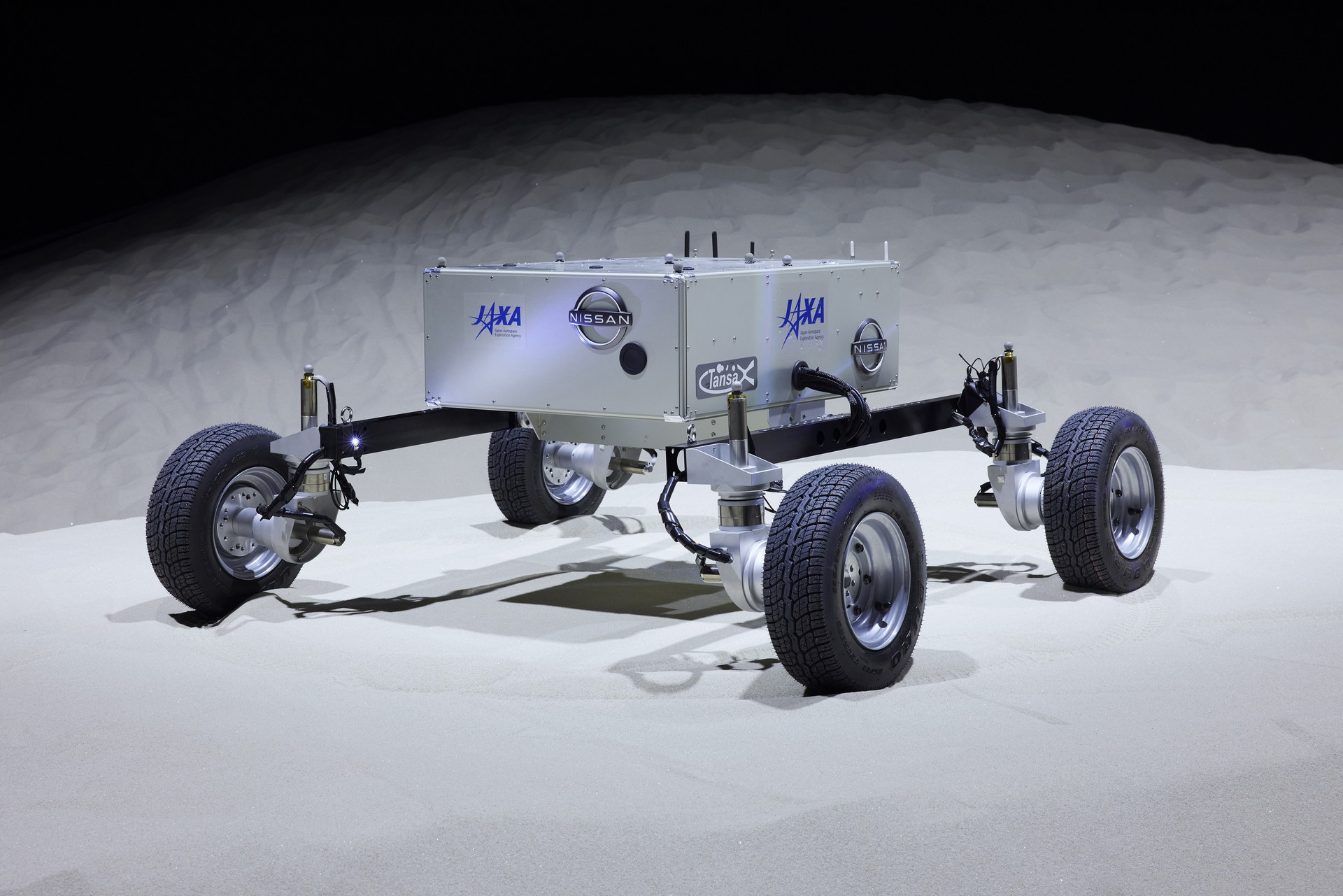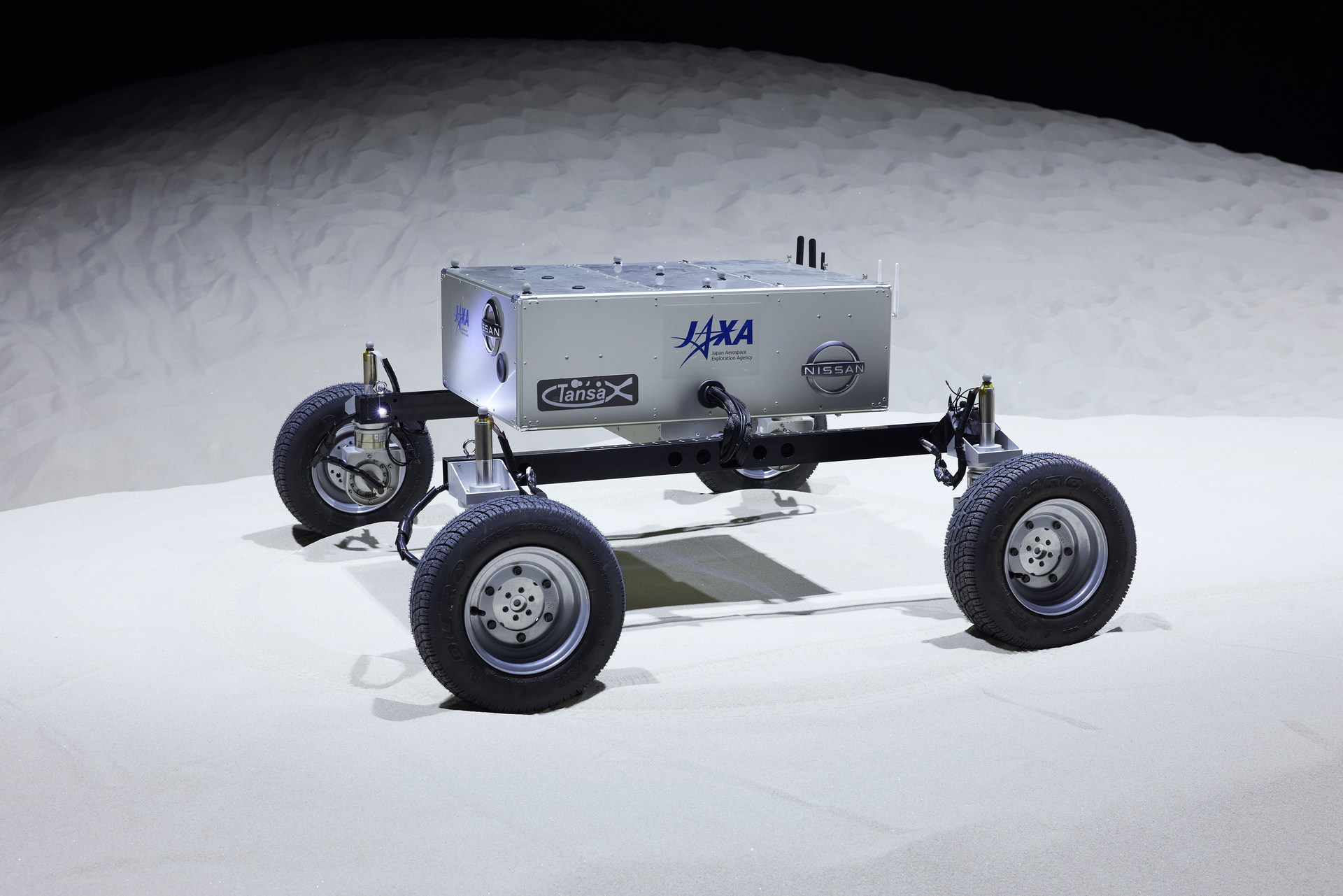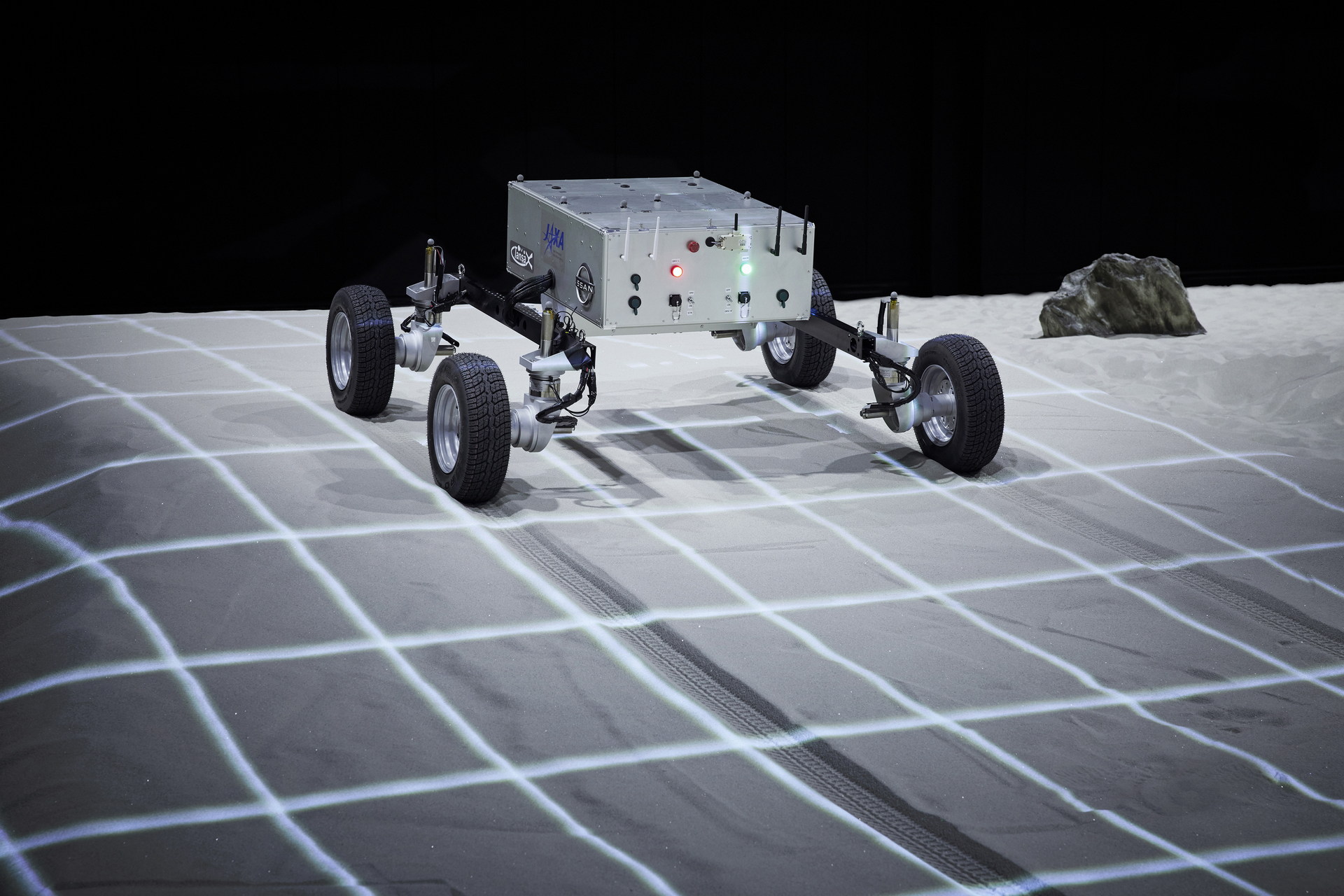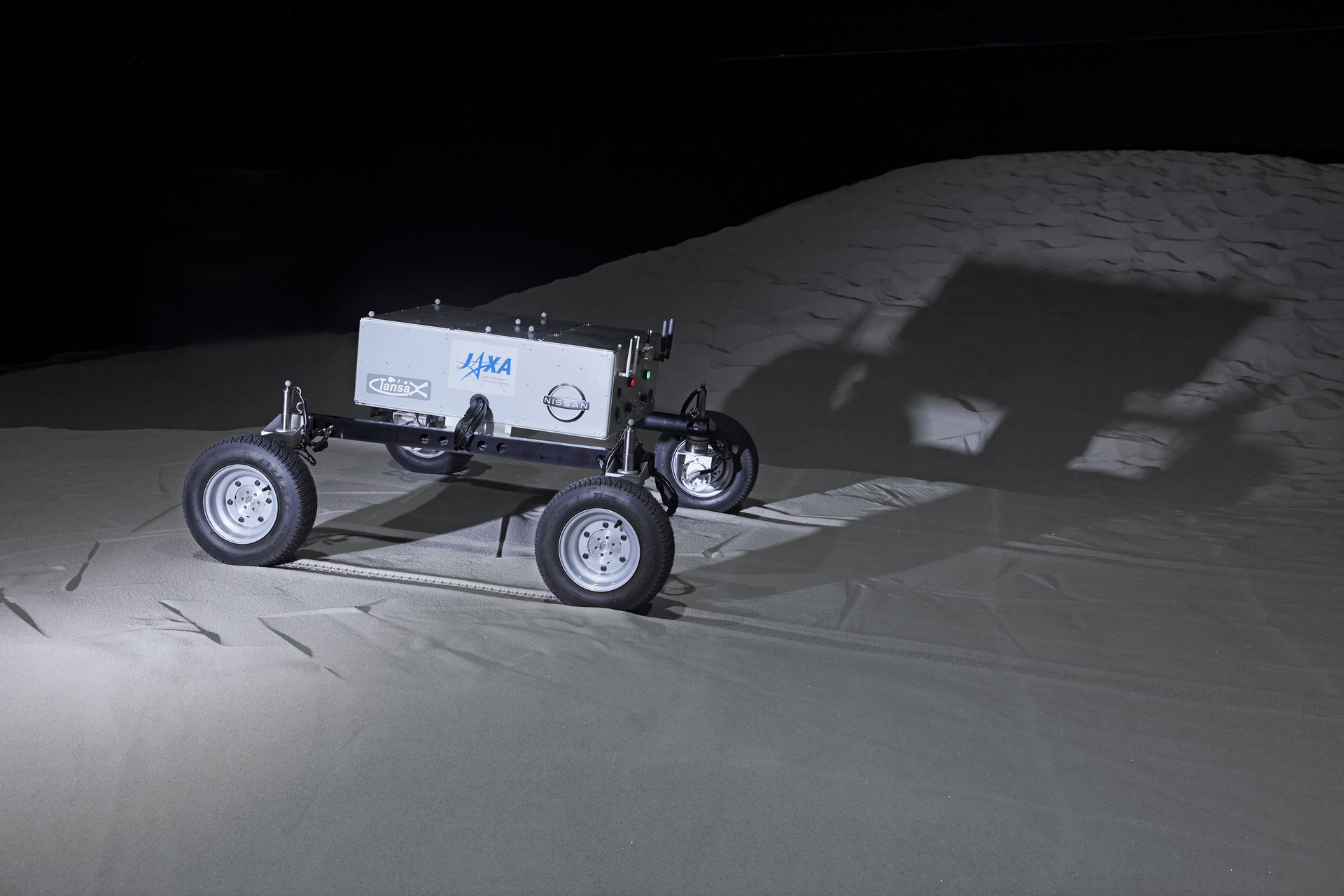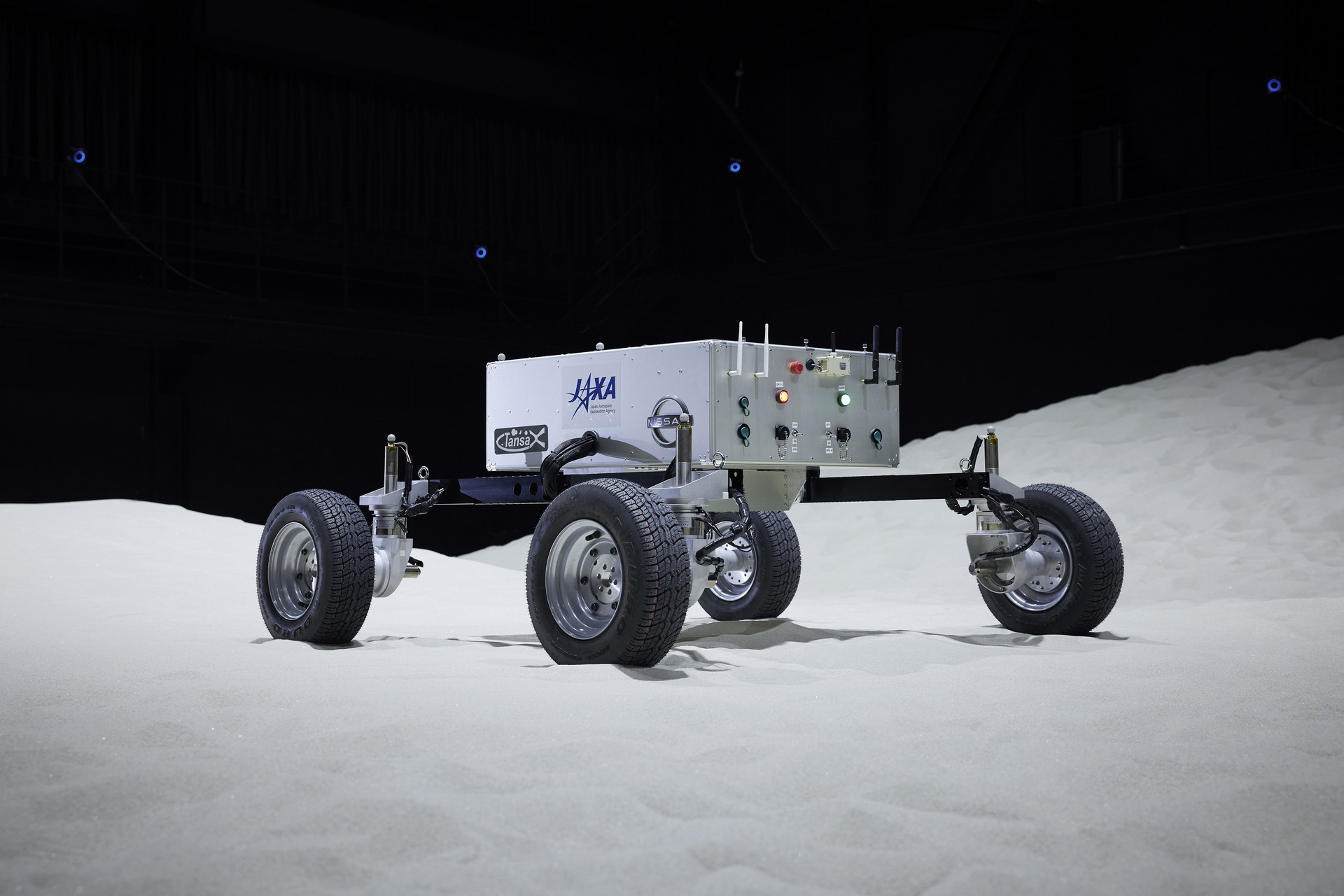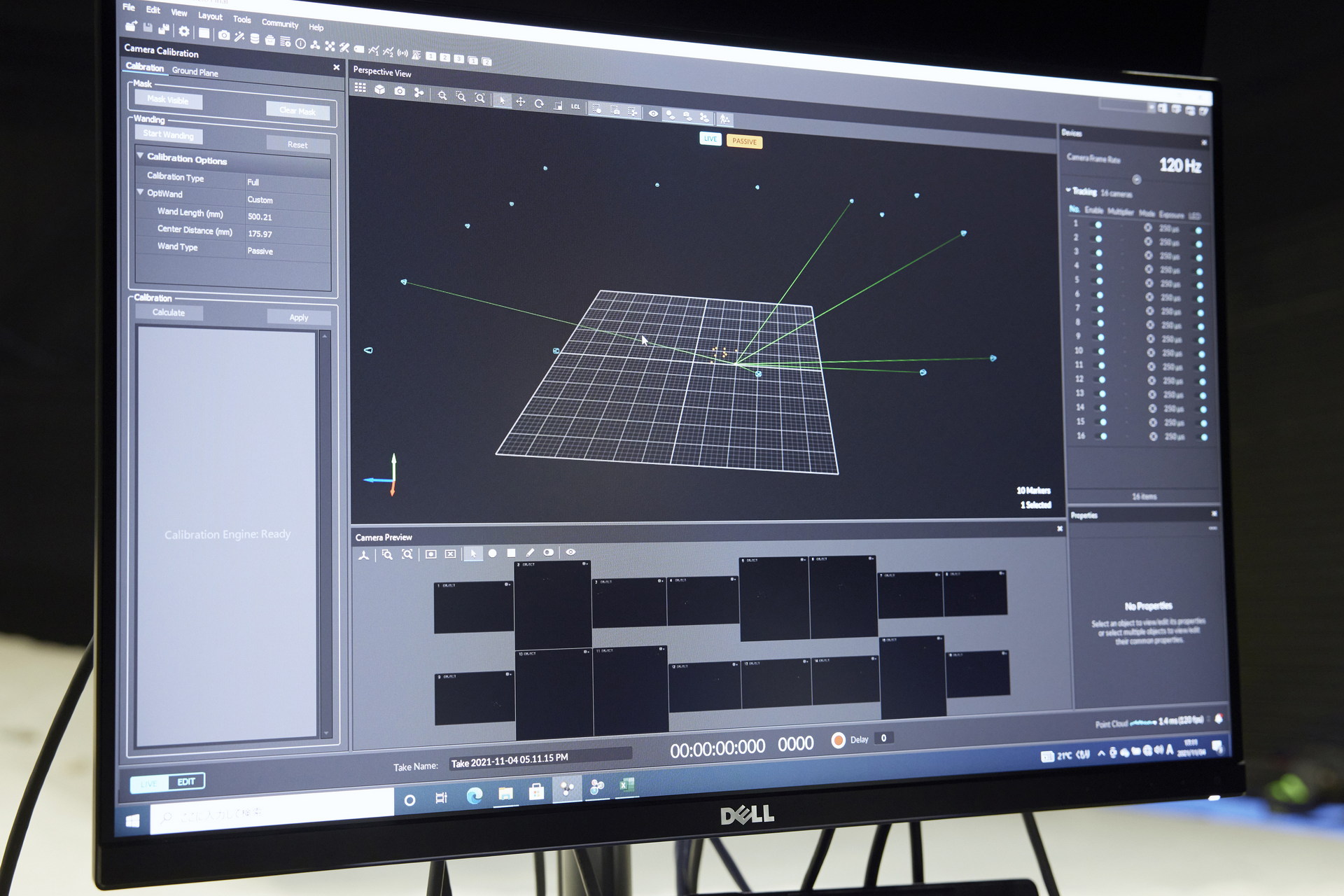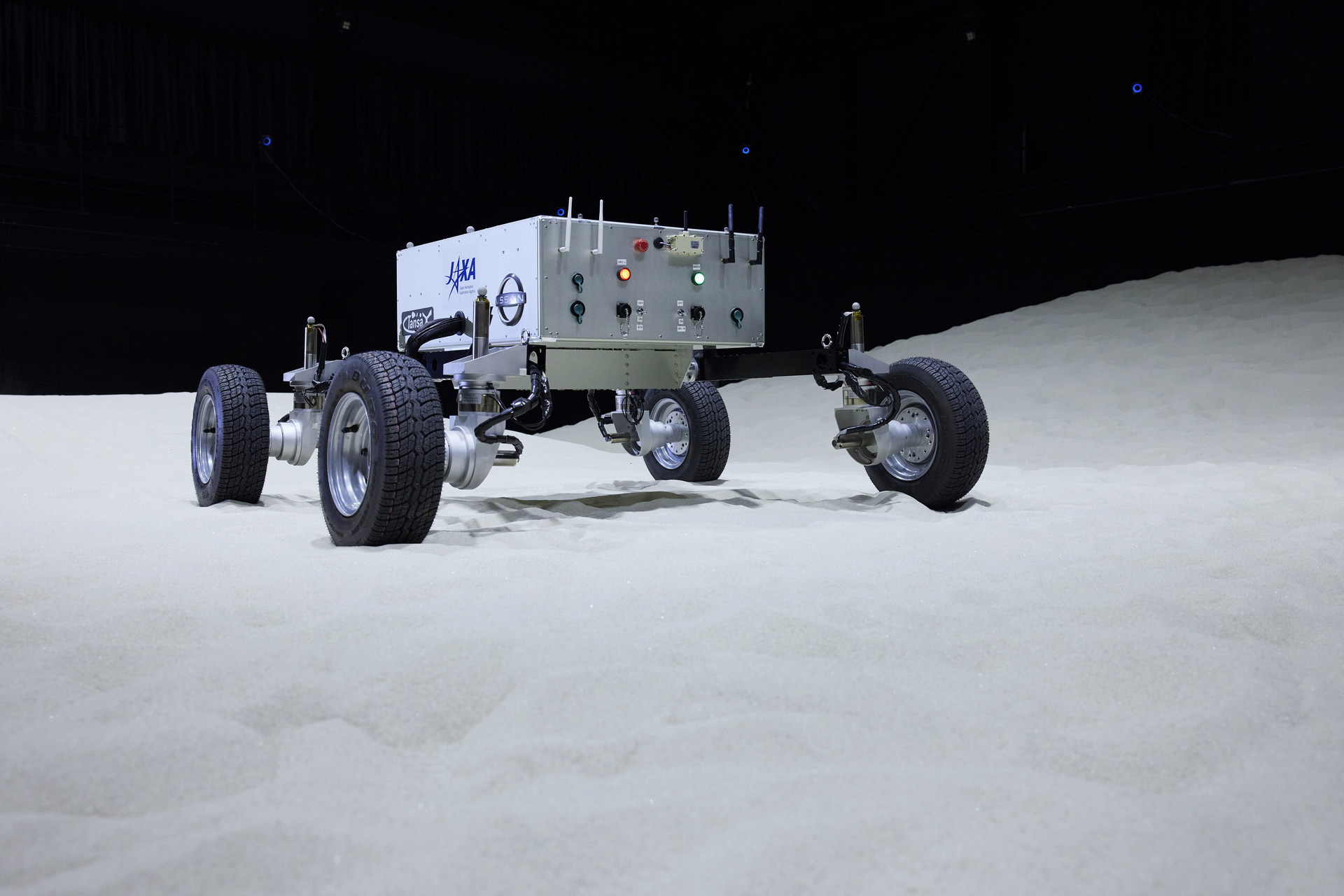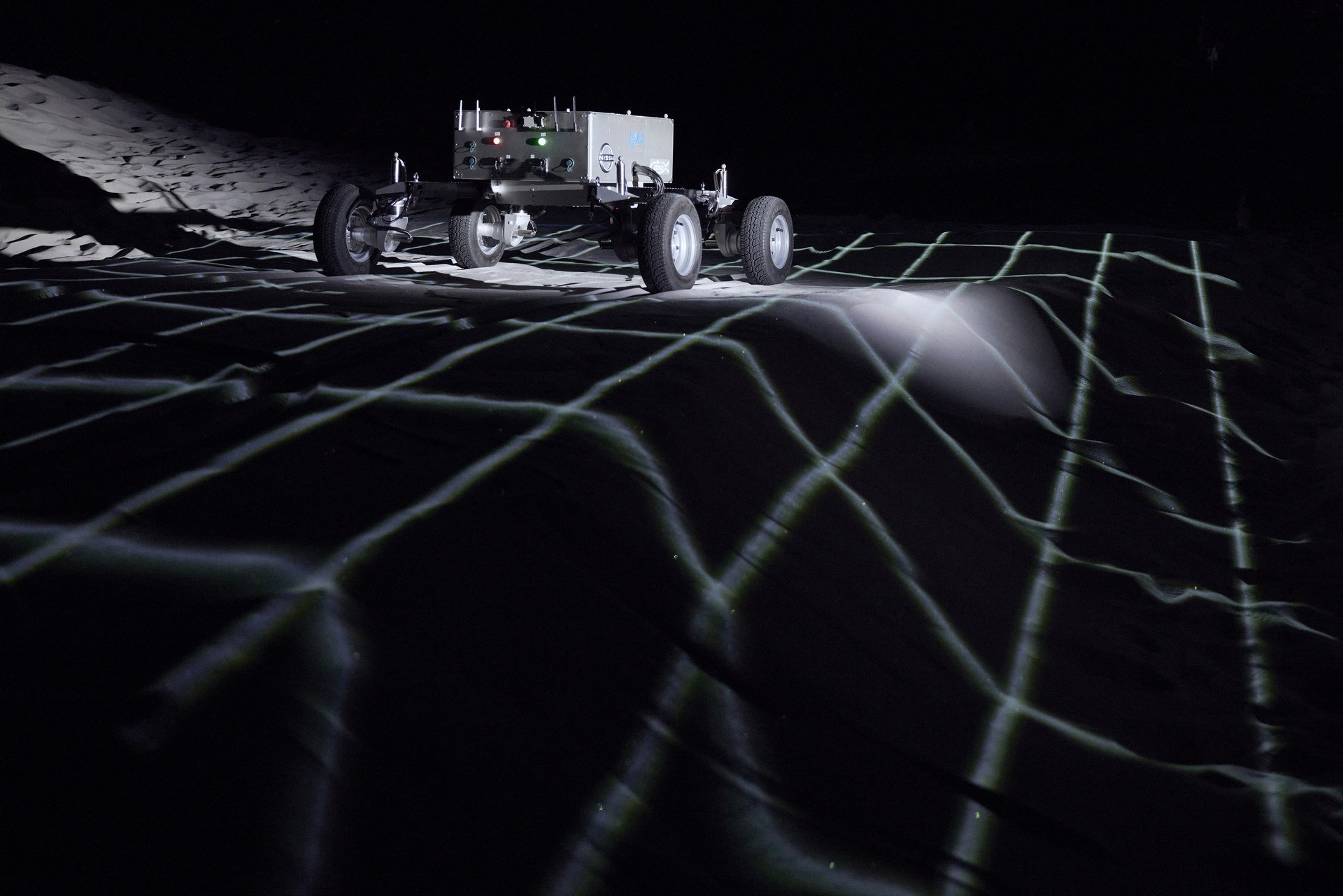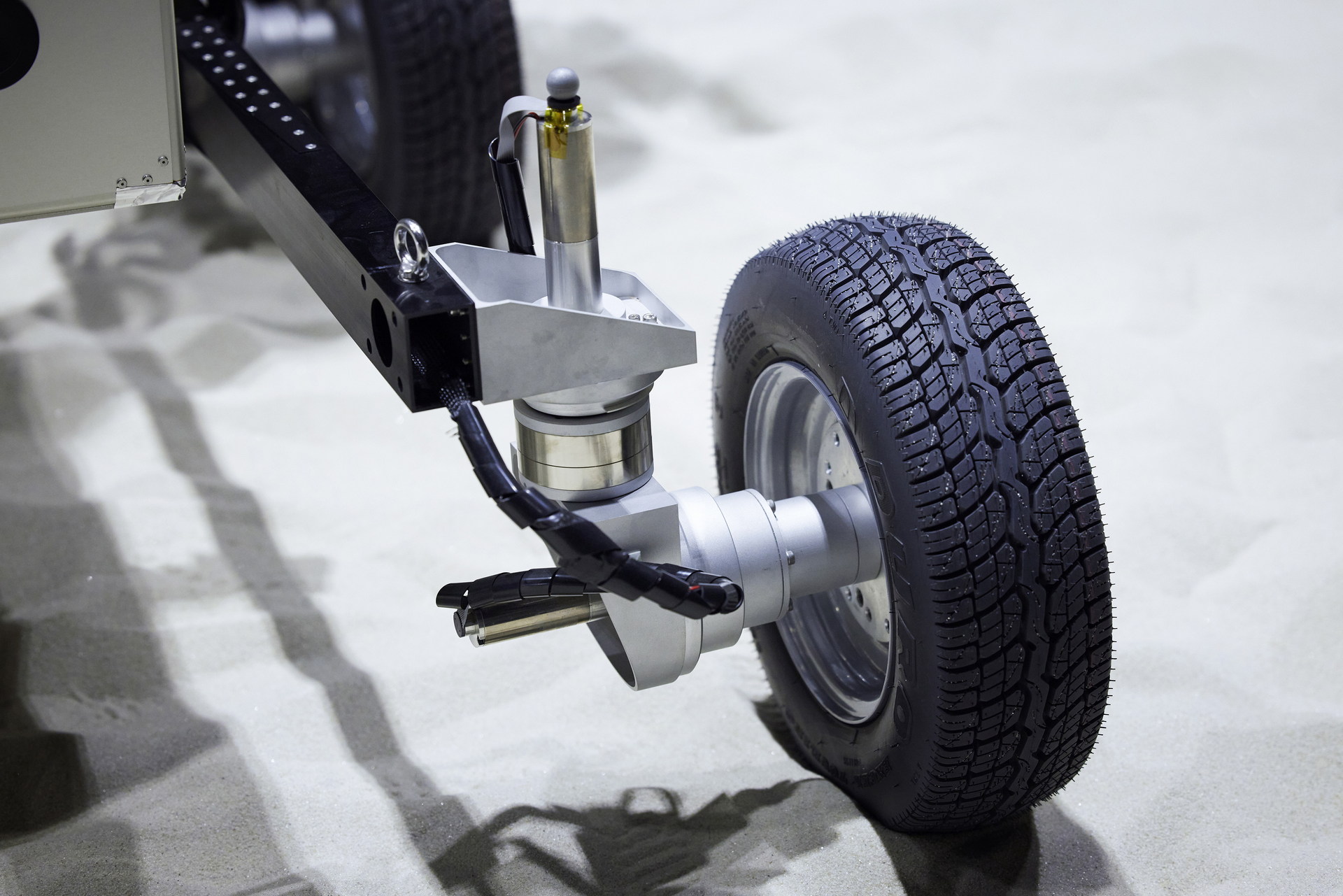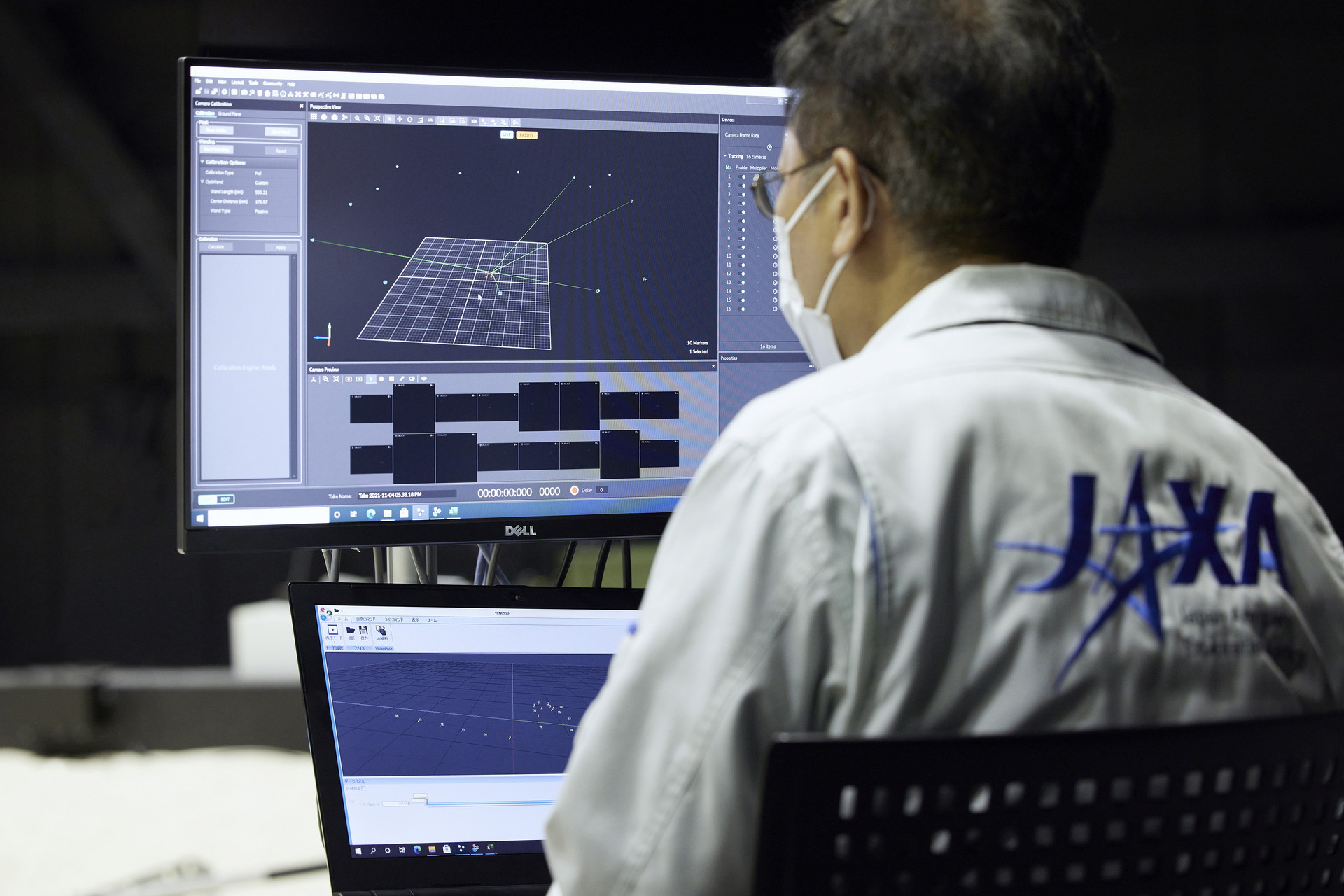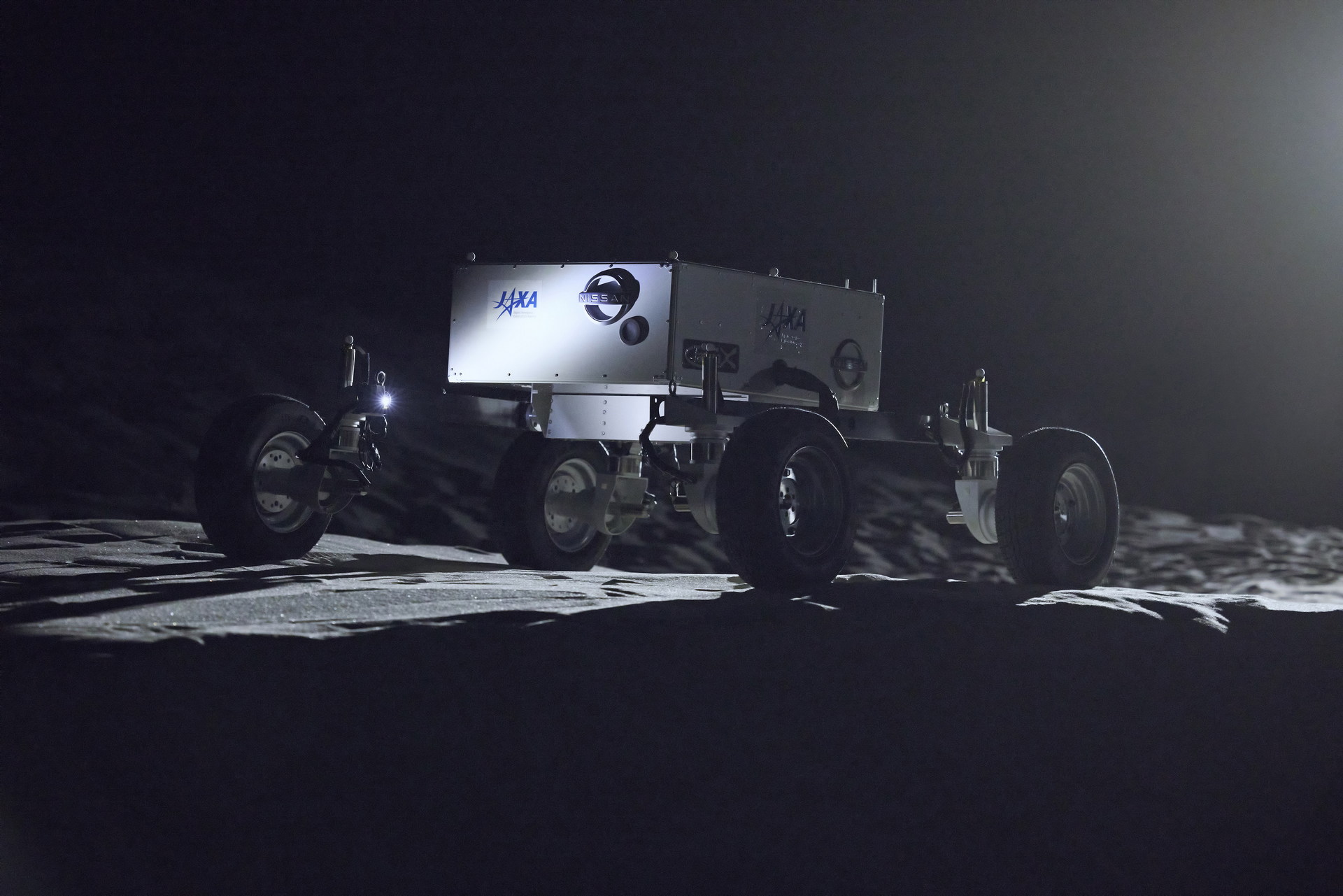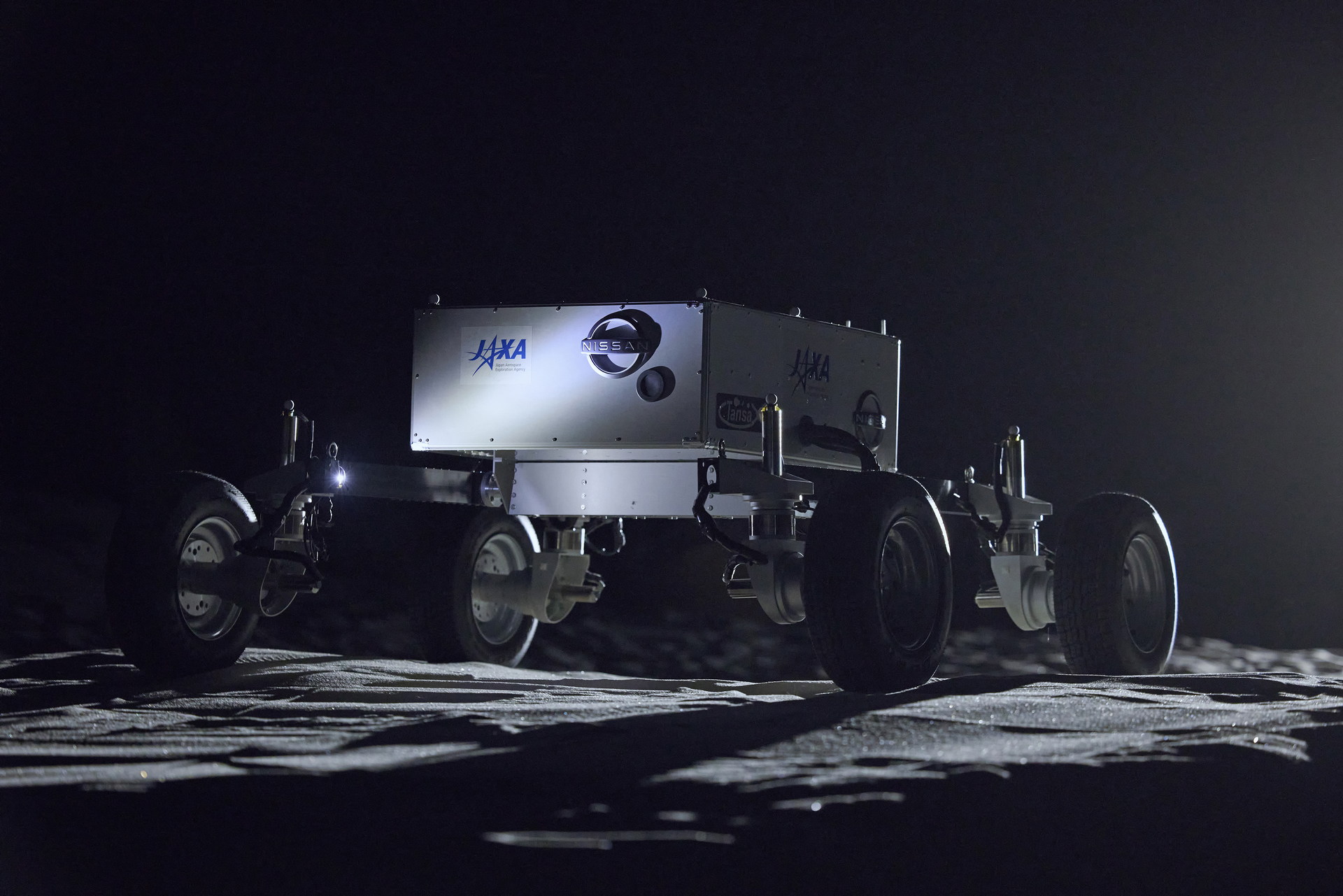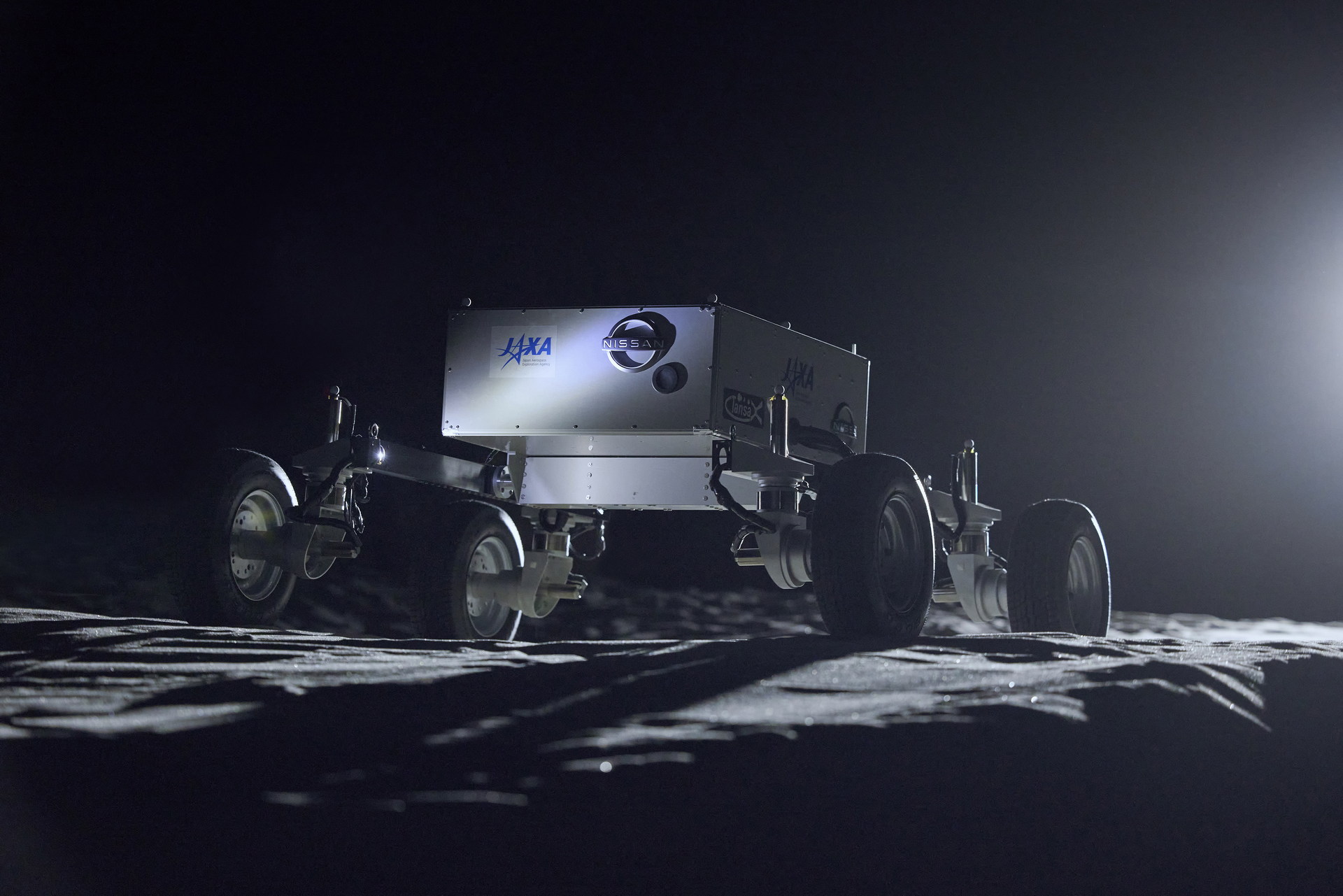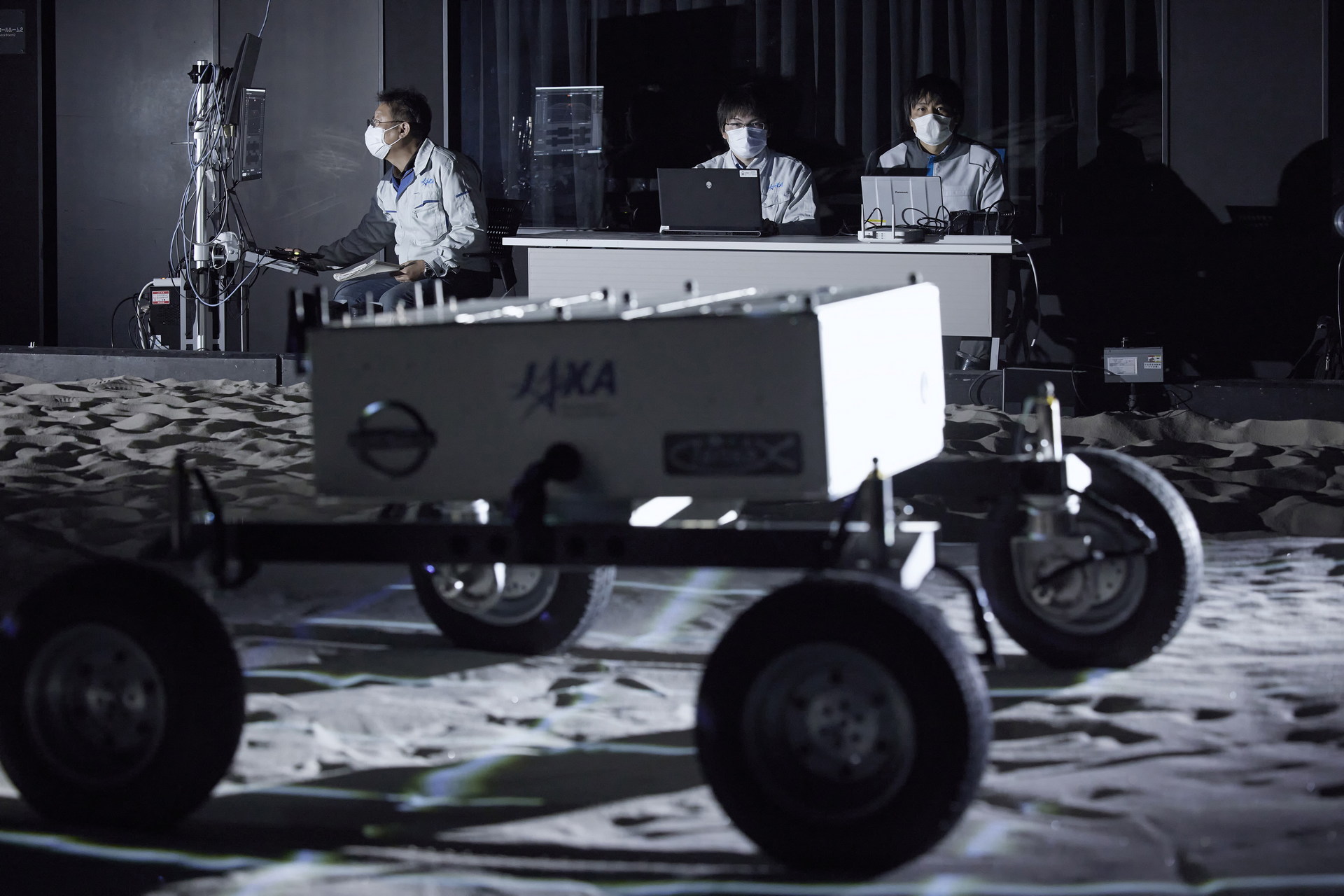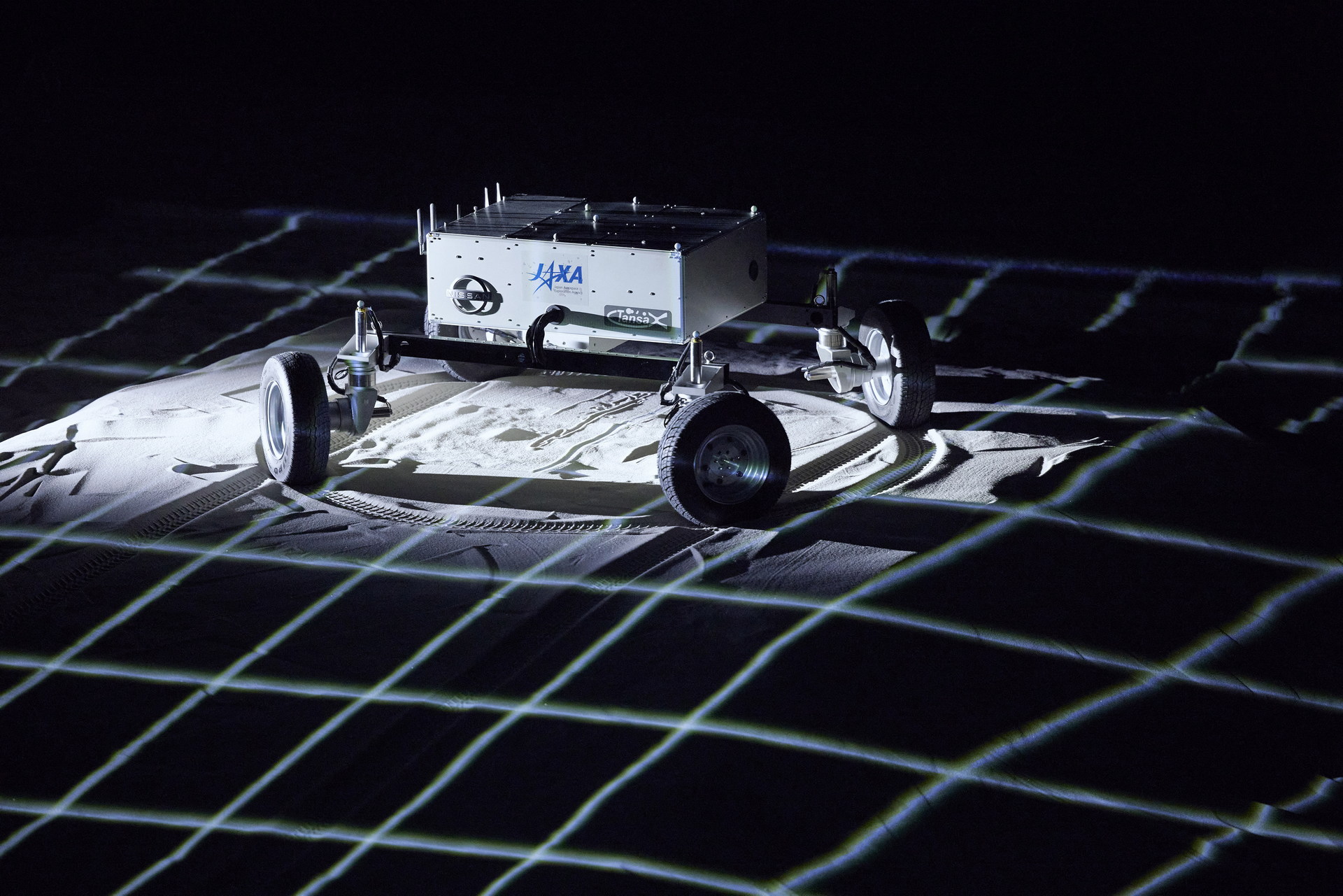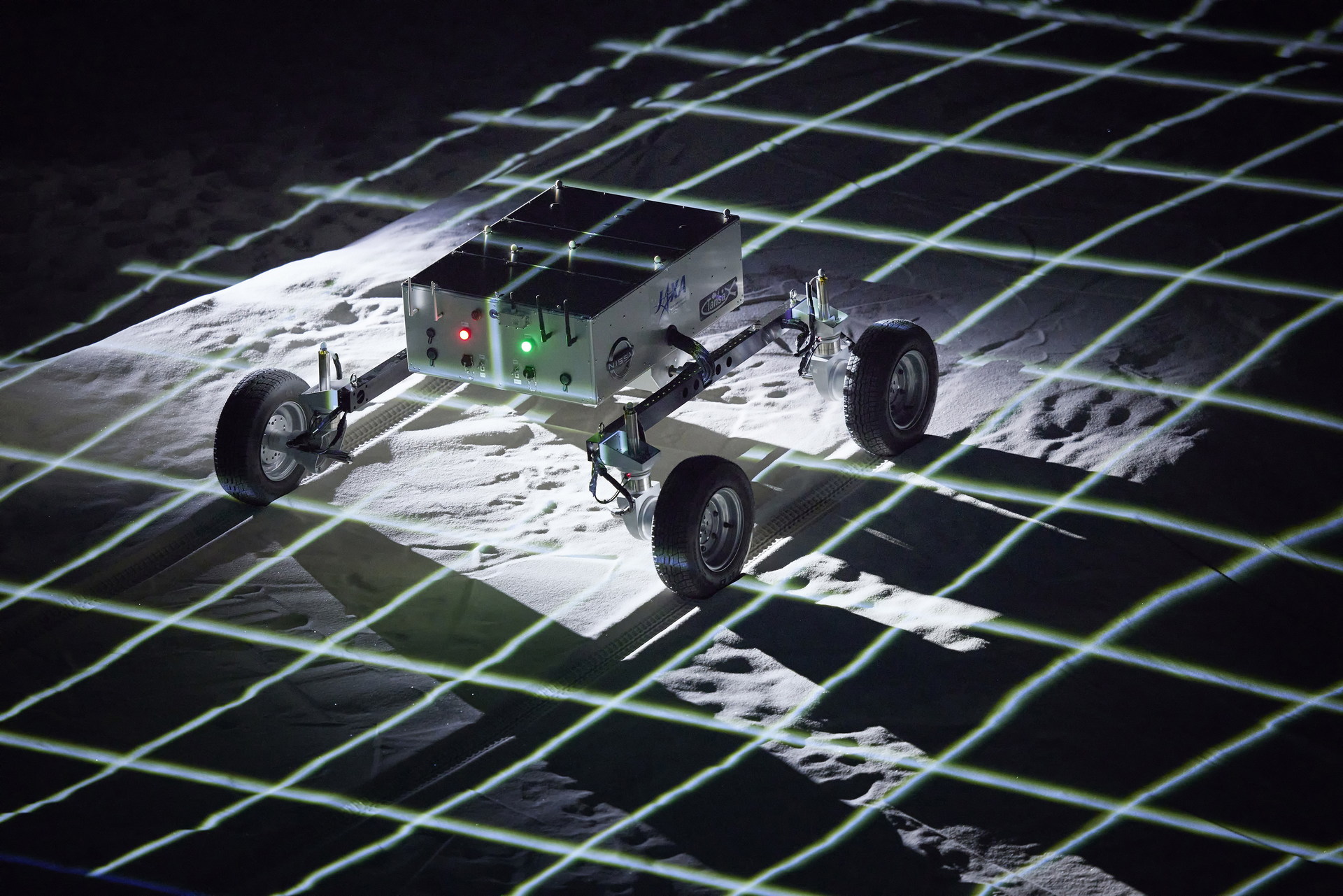Nissan, in collaboration with the Japan Aerospace Exploration Agency (JAXA), unveiled a lunar rover prototype during the Nissan Futures event. The unmanned vehicle doesn’t look as impressive as the Toyota Lunar Cruiser unveiled a couple of years ago – again in collaboration with JAXA – since its role is quite different.
The lunar rover, designed by the JAXA Space Exploration Innovation Hub Center, is using Nissan’s e-4ORCE all-wheel control technology that can be found on the flagship trim of the production-spec Ariya. The electric all-wheel drive system allows the lunar rover to drive over the powdery, rocky and undulating terrain that is found on the surface of the moon by controlling each wheel independently.
See Also: Toyota’s Lunar Rover Will Allow Humans To Drive On The Moon Again
Nissan has been collaborating with JAXA on the driving controlability of the Japanese lunar rover since January 2020. Besides being beneficial for future space exploration, the joint research is helping Nissan to evolve the e-4ORCE technology for better performance on sandy terrain and harsh conditions which can also occur on planet Earth.
Styling-wise the lunar rover is pretty much a box on wheels since aerodynamics don’t play an important role on the moon. Nissan and JAXA didn’t give us details on the performance figures but from the pictures, we can see that each wheel has independent suspension and can be steered in all different angles allowing the vehicle to rotate around its core axis. The lunar rover also gets an array of sensors, while featuring both Nissan and JAXA logos.
See Also: GM Teams Up With Lockheed Martin To Build NASA’s Next-Gen Lunar Rover
Ikkoh Funaki, JAXA Director of the Space Exploration Innovation Hub Center, said: “JAXA aims to apply the research results to future space exploration. We are collaborating with companies, universities and research institutes on projects that are feasible and have potential for commercialization and innovation. By conducting research with Nissan, which has expertise in electrified technologies, we hope to apply our findings to the development of higher-performance lunar rovers.”




